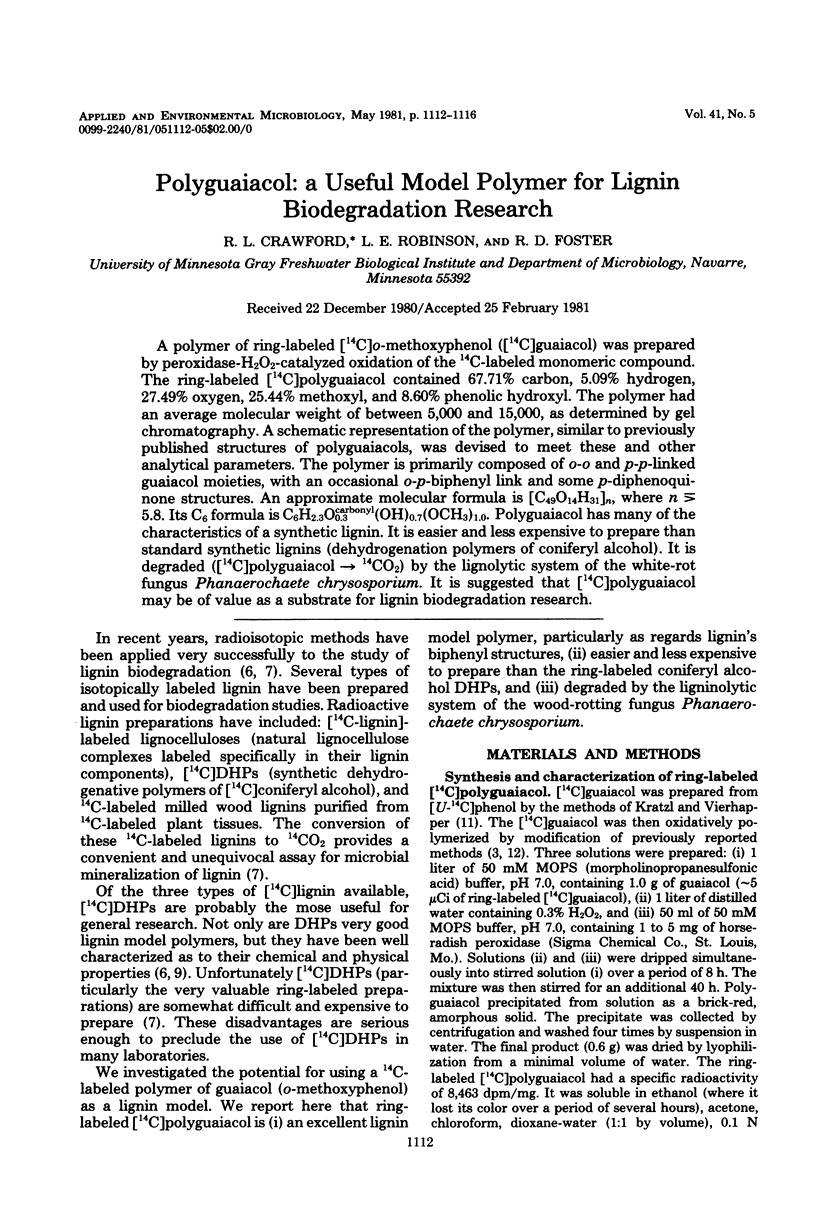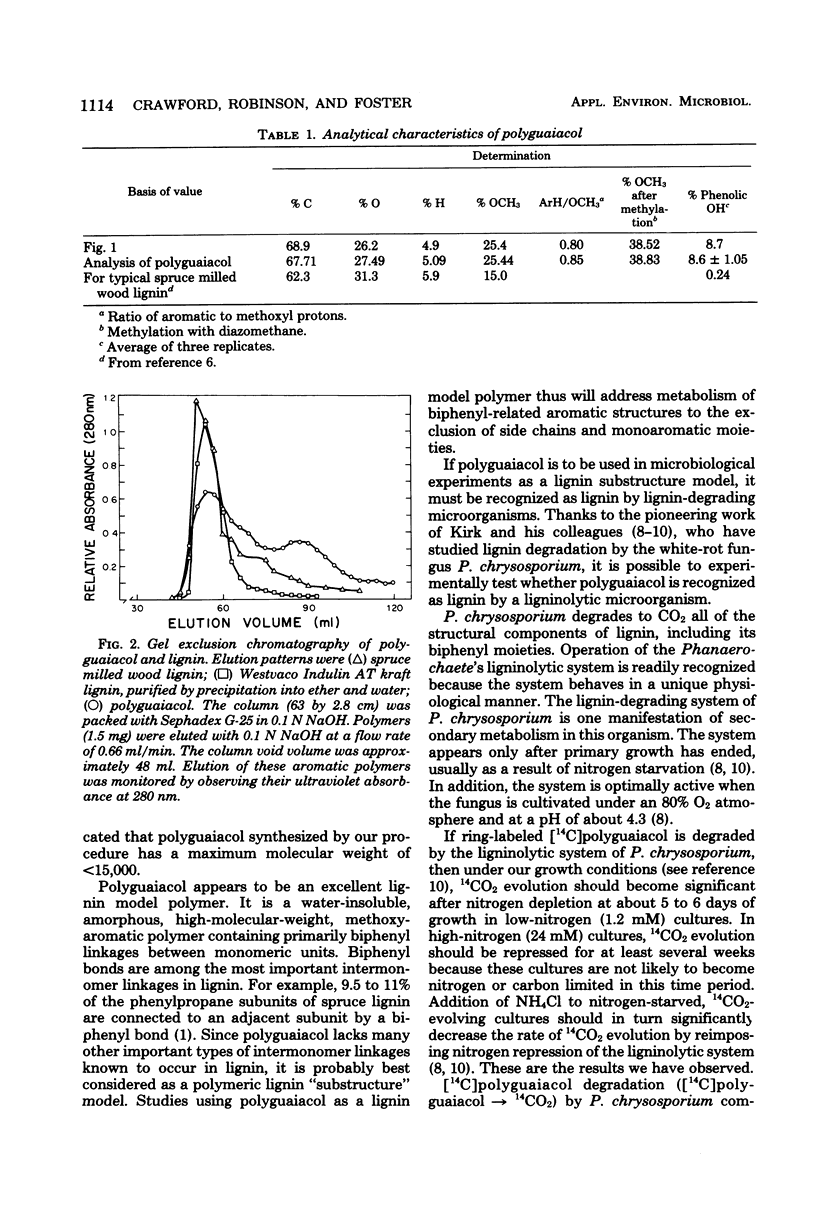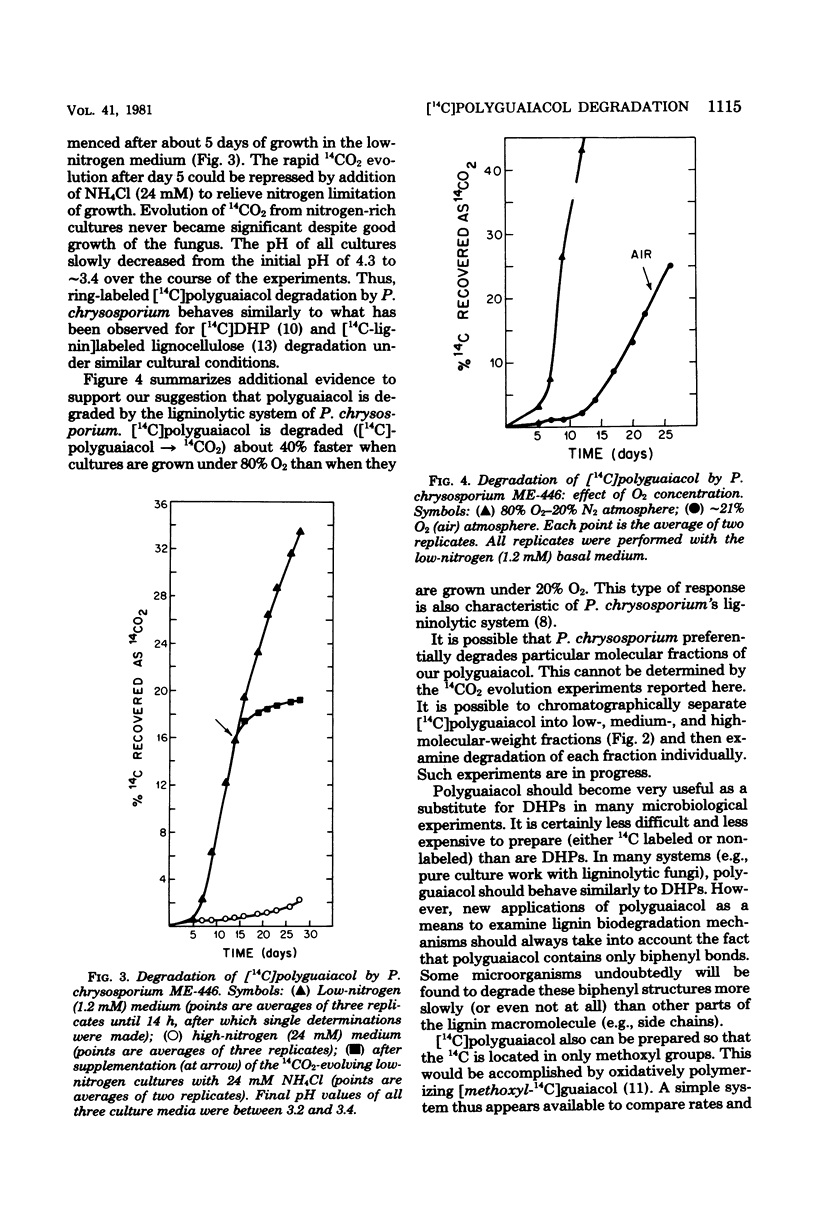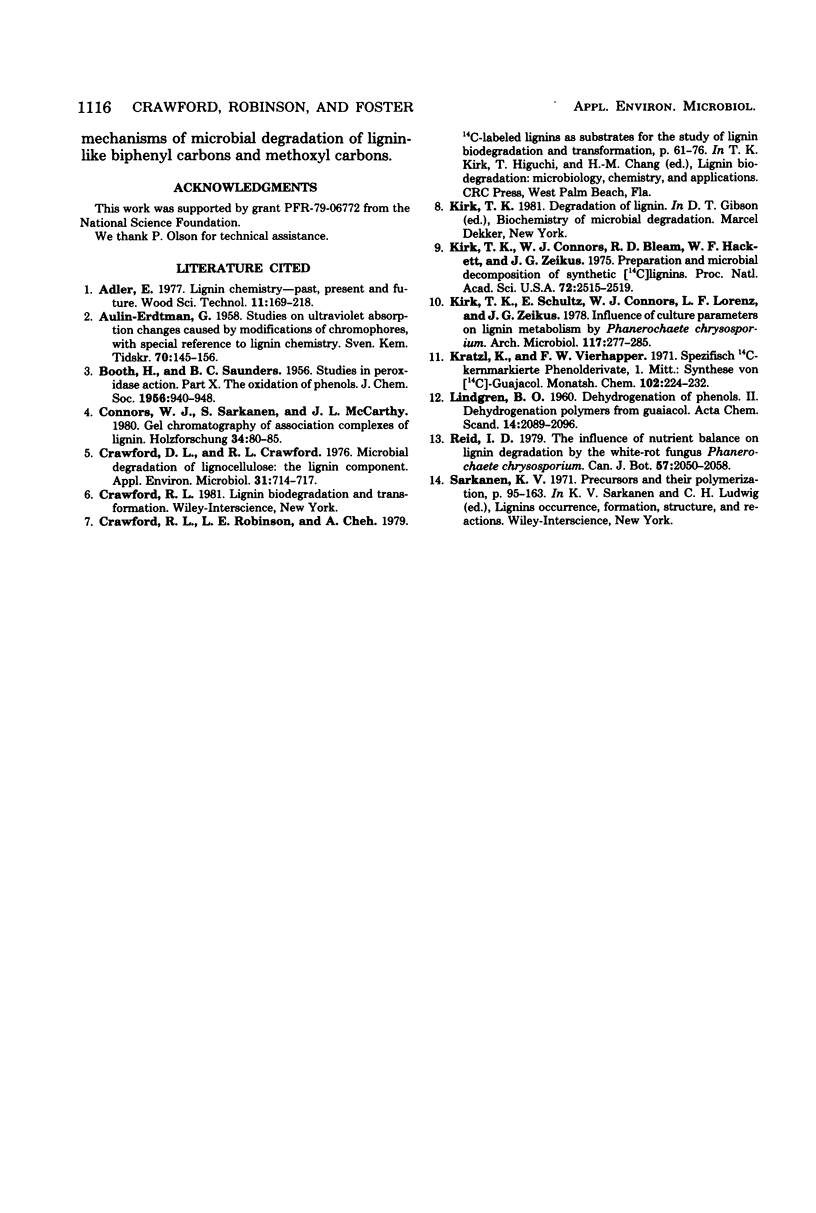Abstract
A polymer of ring-labeled [14C]o-methoxyphenol ([14C]guaiacol) was prepared by peroxidase-H2O2-catalyzed oxidation of the 14C-labeled monomeric compound. The ring-labeled [14C]polyguaiacol contained 67.71% carbon, 5.09% hydrogen, 27.49% oxygen, 25.44% methoxyl, and 8.60% phenolic hydroxyl. The polymer had an average molecular weight of between 5,000 and 15,000, as determined by gel chromatography. A schematic representation of the polymer, similar to previously published structures of polyguaiacols, was devised to meet these and other analytical parameters. The polymer is primarily composed of o-o and p-p-linked guaiacol moieties, with an occasional o-p-biphenyl link and some p-diphenoquinone structures. An approximate molecular formula is [C49O14H31]n, where n ⋝ 5.8. Its C6 formula is C6H2.3O0.3carbonyl (OH)0.7(OCH3)1.0. Polyguaiacol has many of the characteristics of a synthetic lignin. It is easier and less expensive to prepare than standard synthetic lignins (dehydrogenation polymers of coniferyl alcohol). It is degraded ([14C]polyguaiacol → 14CO2) by the lignolytic system of the white-rot fungus Phanaerochaete chrysosporium. It is suggested that [14C]polyguaiacol may be of value as a substrate for lignin biodegradation research.
Full text
PDF




Selected References
These references are in PubMed. This may not be the complete list of references from this article.
- Crawford D. L., Crawford R. L. Microbial degradation of lignocellulose: the lignin component. Appl Environ Microbiol. 1976 May;31(5):714–717. doi: 10.1128/aem.31.5.714-717.1976. [DOI] [PMC free article] [PubMed] [Google Scholar]
- Kirk T. K., Connors W. J., Bleam R. D., Hackett W. F., Zeikus J. G. Preparation and microbial decomposition of synthetic [14C]ligins. Proc Natl Acad Sci U S A. 1975 Jul;72(7):2515–2519. doi: 10.1073/pnas.72.7.2515. [DOI] [PMC free article] [PubMed] [Google Scholar]


